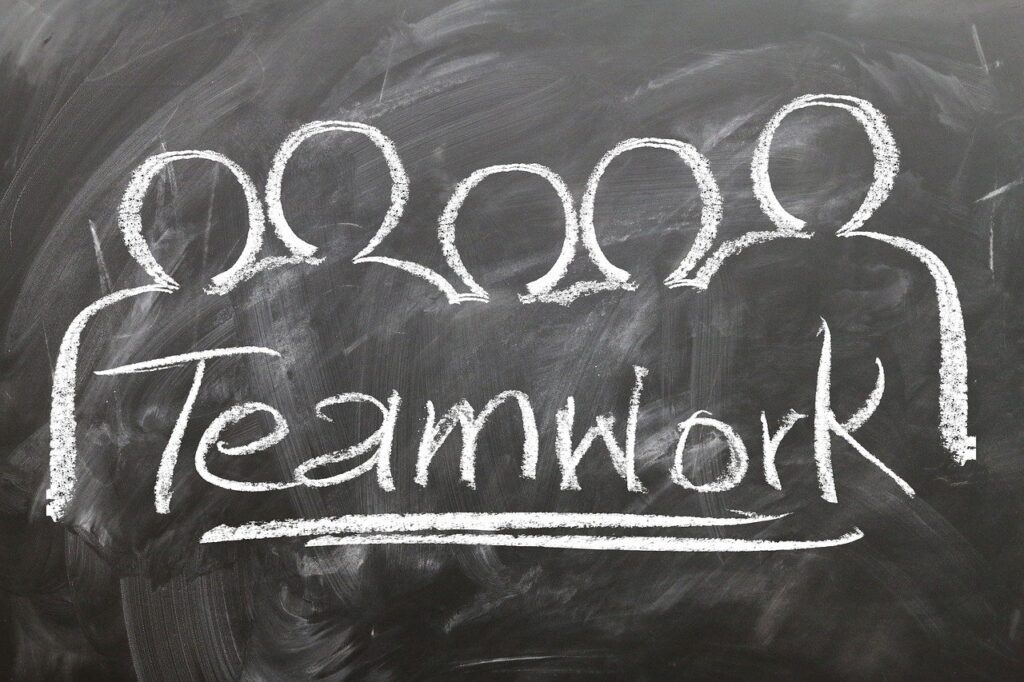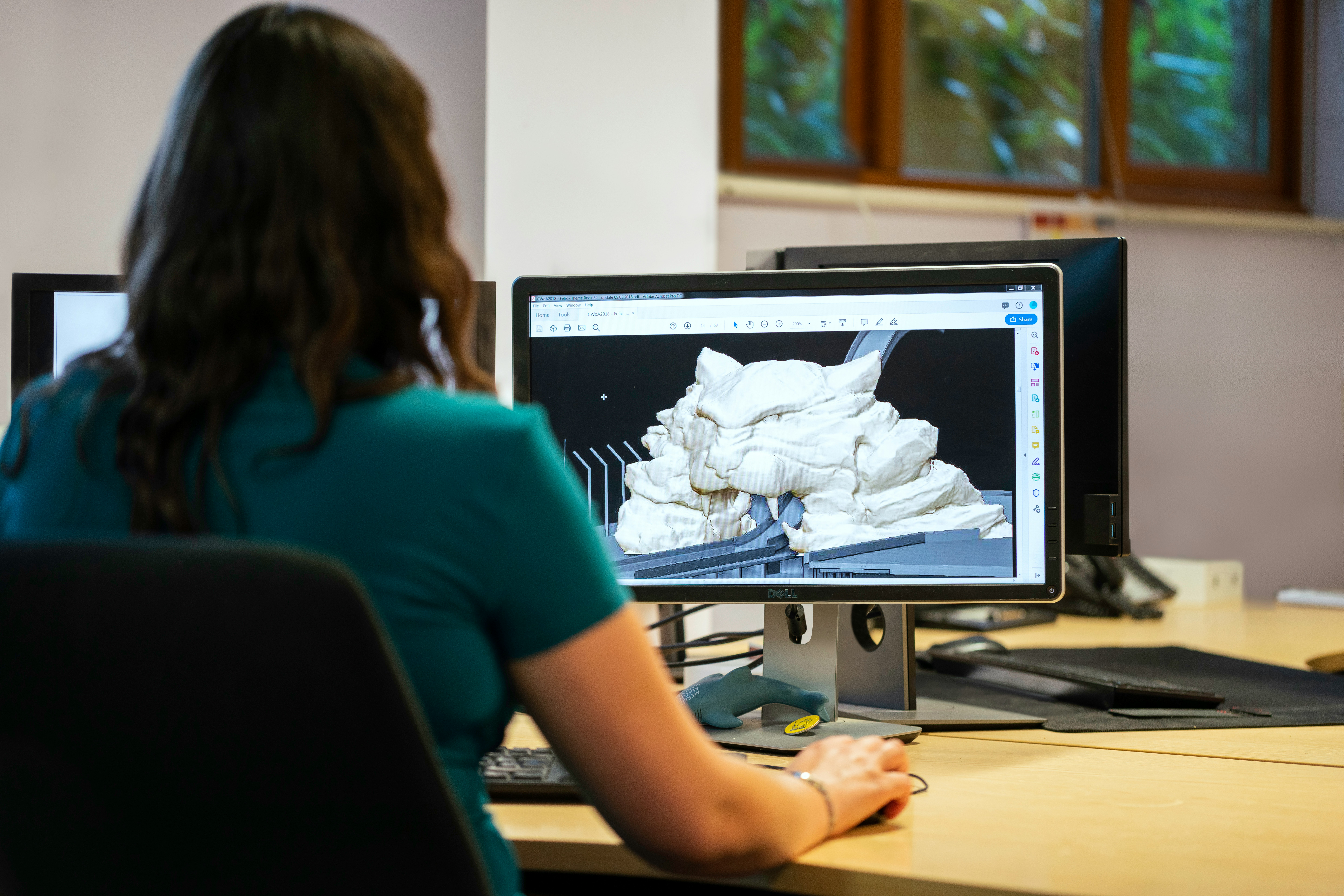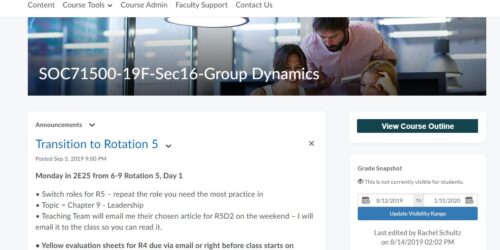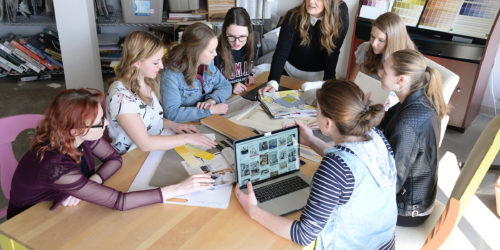Team Builders for Group Work
This tip provides team building activities to develop groups, build community, and support group assignment completion. The ideas in this post may be adapted for courses delivered in any mode.
Team building is an umbrella term for various reflective and collaborative activities that enhance social relations. Team builders improve group performance by building positive relationships among group members.
Team Building Supports Group Work

Team building supports group work in all forms. Teams who are unable to meet in-person must overcome various scheduling, meeting, and other interpersonal barriers (Oertig & Buergi, 2006), making team builders especially valuable for online (synchronous and asynchronous) group work.
In-class activities that support group work may bolster student perceptions of fairness when assessments are group-based (Burdett, 2005). By encouraging students to focus on team building, faculty can create the conditions for successful teamwork in classes with group assignments. Debriefing the activity as a class is critical to reinforce learning.
Below is an overview of selected team building activities once groups are assigned. Most only require use of simple tools for in-person classes, and features of Zoom or Teams for a synchronous online classroom. Links are provided with more detailed activity instructions to ensure these team builders run smoothly in classes.
As you read, consider what goal you wish to achieve with group development, and select your activity accordingly.
Click the accordion buttons (+) below for more information.
Guessing Together
Creating Together
Draw a Tree: The goal of this activity is to raise awareness of being mindful of others in the group. Using a whiteboard, group members work together to draw a tree (realistic or abstract). As groups draw, the professor points out that the root system is not drawn. De-brief on the importance of recognizing what may be out of sight (selective thinking), and how to prevent that habit in group work. See more: Draw a Tree (by Thiagi Group).
A variation for online synchronous delivery is to have students think about how group work could be represented visually, then have students create collaborative doodles on one or more shared documents.
See more: Doodling Together by Anja Ebers.
Marshmallow Challenge: The goal of this activity is to build the tallest free-standing structure out of 20 sticks of spaghetti, one yard of tape, one yard of string, and one marshmallow. The marshmallow needs to be on top. There can be variations of this activity, such as using only pipe cleaners and marshmallows.
Debrief on strategy and roles used in the activity, as well as what groups take away. See more: Marshmallow Challenge (by Tom Wujec/Session Lab).
Review this article by Joshua Davies to consider ways that the marshmallow challenge may be adapted online.
Communicating Effectively
Can You Hear Me? In in-person or live online breakout groups, one person is the speaker and the others are artists. The speaker must pick a random image and describe it in a way that the artists are able to draw it. The speaker must only describe the image using geometric shapes, making it challenging for the artists to understand. At the end of a time period, everyone shows their images with their camera.
Example: The speaker says draw a long skinny vertical rectangle with three little horizontal rectangles of equal width of the vertical rectangle coming from the right side of the vertical rectangle to the right, with one at the top, one at the bottom, and one in the middle’, but not ‘write the letter E’.
Debrief to discuss clear instructions and effective listening skills. Picture ideas can be found here: random picture generator. See more: Employment Hero.
Stinky Fish: The goal is to create strong lines of communication by sharing information. In groups, students share worries or concerns about certain issues, noting that problems often get worse if you don’t acknowledge and deal with it (i.e., as a fish that is not dealt with gets stinkier over time). Students draw a fish on a white board or annotate a screen shared image of a fish, then add what don’t like to talk about when it comes to group work (e.g., their stinky fish).
This may be done as a large group to introduce group work. Or, it may be done in small groups, with each group sharing their fish with the class/professor. It also may be delivered using a co-authored document or discussion forum. Debrief by looking at patterns and brainstorming ideas to deal with the “stinky fish” once it’s on the table.
Visit this link to download a fish template. See more: Stinky Fish (by Hyper Island)
Help Me, Help You: The goal is to improve team effectiveness through sharing and listening about how group members can help and be helped. In a breakout group, each group member shares one thing they could do to help out another team member and how another team member can help them. Team members should ask for clarification and ensure agreement. Requests should be specific, clear, doable, and documented. A follow up debrief reviews the list of what actions were taken.
See more: What I Need From You (Liberating Structures) and Team of Two (by Nick Heap)
Heard, Seen, Respected: The goal of this activity is to practice listening with empathy. In small groups, each participant tells a story about a time where they felt seen, heard, and respected. Group members listen without interruption, asking only clarifying questions. Everyone has an equal amount of time.
Debrief the patterns that emerged and steps to ensure that students feel seen, heard, and respected in group work.
Celebrating Group Strengths
Appreciations Exercise: The goal is to hear strengths from others and acknowledge them to yourself, building motivation and self-confidence. In this activity, students type their names on different pages of a shared document. Each member group member writes a phrase or a few words about what they value most about that person with respect to the group project. Everyone reads their comments silently, then each recites to the group the one comment they appreciate the most.
Note that this is an activity that should be de-briefed and applied to establishing group work norms.
See more: Appreciations Exercise (by Nick Heap)
Emoji Riddles: The goal is for in-person or online groups to work together to solve words or phrases using only emojis. Present a list of emoji riddles in shared documents, one per group, and give students time in breakout groups to solve them. The group who solves the most or the fastest wins. See more: Emoji riddles and Emoji quiz. To discourage students look up the answers online, make up your own riddles related to course content. Or, screenshare an image with multiple emojis and have students create their own emoji words, phrases, or riddles.
Identifying Skill Strengths
Leadership Pizza: This activity offers a self-assessment framework for effective leadership traits in groups. The group brainstorms the traits of good leaders, then selects 6 to 8. Each student in the group draws a circle with pizza slices on a piece of paper, labels each slice with a leadership trait, then ranks themselves by colouring in a section of the slices. Students take a photo of their pizza and upload them to a shared folder. Debrief the importance of different leadership strengths in a group.
Note that even when students describe complementary skill sets, all students in the group must demonstrate learning outcomes. Dissuade students from dividing up tasks: rather, encourage group members with certain skills to lead others in the group in these areas.
See more: Leadership Pizza (Robert from Session Lab)
Common, Uncommon: The goal is to discover strengths that may be utilized in different group roles. In this activity, a screen shared whiteboard or PowerPoint slide is divided in two, one half labelled Common and the other half labelled Uncommon. The group must agree on and list at least three strengths that everyone has in common. Then, each team member must discover one strength that no one else has in the group. The debrief may include pairing strengths to particular roles to carry out group assignments. See more: The Big Book of Conflict (2010) by M Scannell.
For more activity ideas for building community in synchronous online courses, see The First Two Weeks: Ice Breakers in Synchronous Online Team Environments.
References
Burdett, J. (2007). Degrees of separation: Balancing intervention and independence in group work assignments (Report). Australia Educational Researcher, (34), 55–71. https://doi-org.proxy1.lib.uwo.ca/10.1007/BF03216850
Oertig, M., & Buergi, T. (2006). The challenges of managing cross‐cultural virtual project teams. Team Performance Management, 12: 23–30.
Scannell, M. (2010). The big book of conflict resolution games: Quick, effective activities to improve communication, trust, and collaboration. New York: McGraw-Hill.
Session Lab. (2018). Library of facilitation techniques. https://www.sessionlab.com/



